World War I Movies: Horror in the Trenches
The best World War I movies capture the darkest depths of humanity, and great heroism.
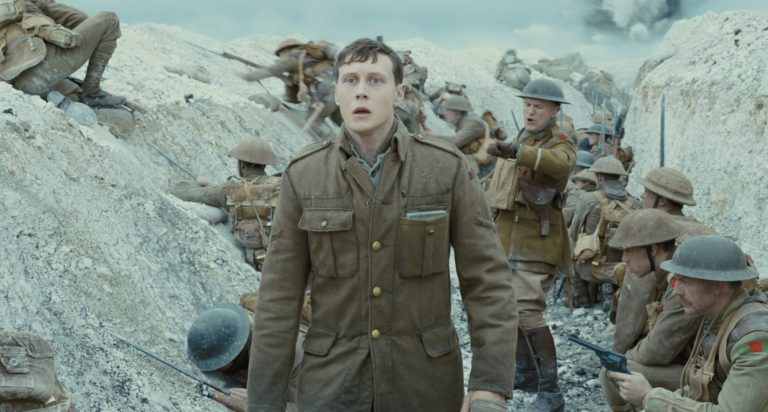
World War I, AKA the First World War, the Great War, and the War to End All Wars, lasted from 1914 to 1918. The first World War I movies started to appear even before the war was over and even into the 2020s are still being made. The genres of these movies ranged from anti-war messaging, romances, dramas, historical films, and action/adventure films.
The film industry mostly makes films about the Second World War. For instance, most famous war movies tend to be about World War II such as Schindler’s List (1993), Saving Private Ryan (1998), Midway (2019). and Enemy Lines (2020). Even the great blockbuster franchise of all time Star Wars was inspired by Nazi Germany (and the Vietnam War). However, there is also a rich cinematic history of movies about WWI and important historical anecdotes to be extracted from these narratives.
This list focuses exclusively on movies that take place during WWI. These historical movies range in tone, style, sentiment and span nearly a century of filmmaking.
All Quiet on the Western Front (1930)
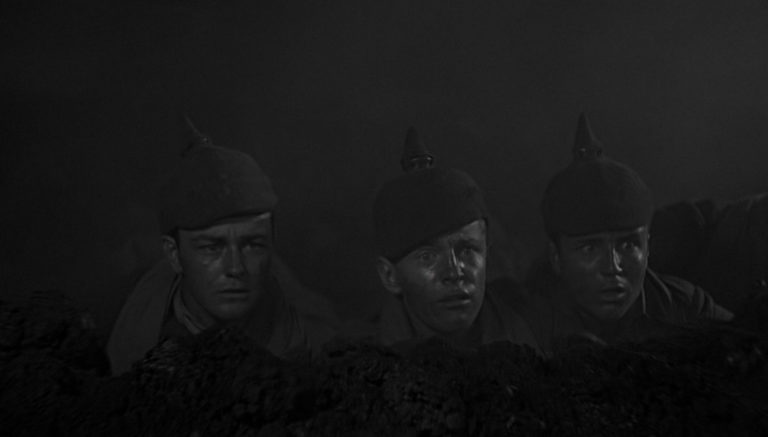
This, only the third movie ever to win the Best Picture Oscar, remains one of the most harrowing depictions of war ever set to film. It follows a young German man who is whipped into a patriotic fervor by a teacher and enlists to fight in the godforsaken trenches of a war that may have been more traumatizing for soldiers than any war before or since. According to a reviewer at the BBC, “Filled with a cast of men, dead before you even have a chance to know them, watching All Quiet On The Western Front is as close as anyone is ever likely to get to the horror of the First World War.”
Westfront 1918 (1930)
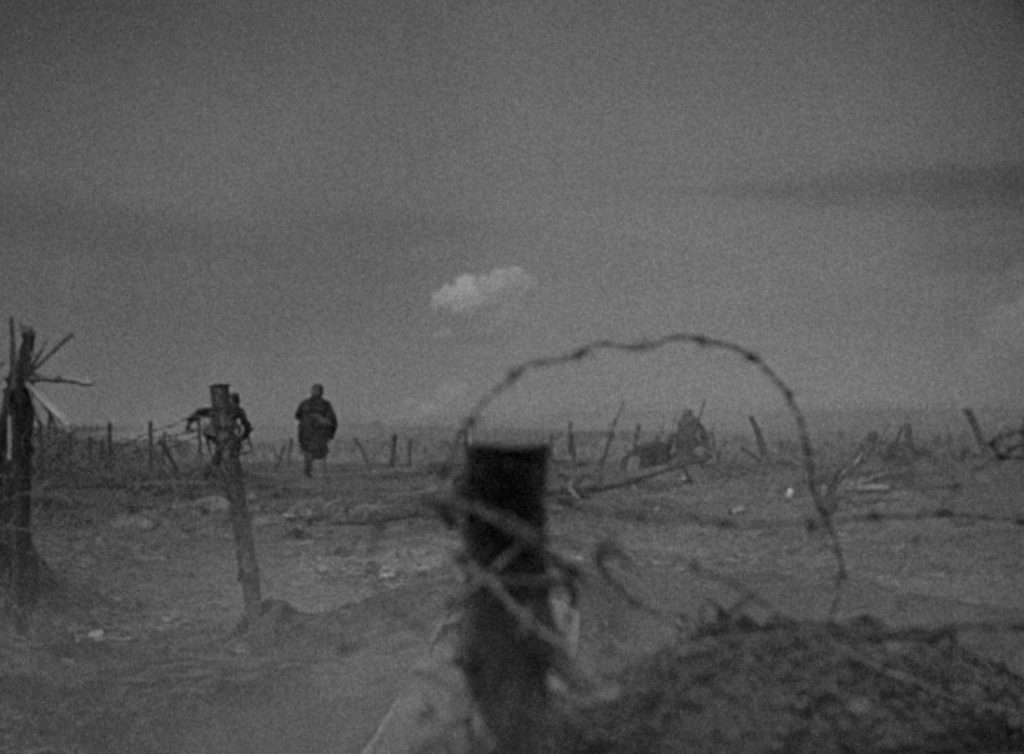
Produced in Berlin and released in Germany as West-front 1918 Vier von der Infanterie and also in America as Comrades of 1918, this bleak depiction of war’s psychic horrors follows a group of German soldiers who are stymied as they fight in the trenches on the front lines of France as the Great War was drawing to a close. A contemporary New York Times review describes the film’s cinematic bleakness: “There are the trees that are stripped of leaves and branches, the stakes bearing the barbed wire, the seared earth; men darting hither and thither, hiding in shell holes, tossing bombs, firing machine guns; one soldier is bowled over in one spot and another somewhere else.”
La Grande Illusion (1937)
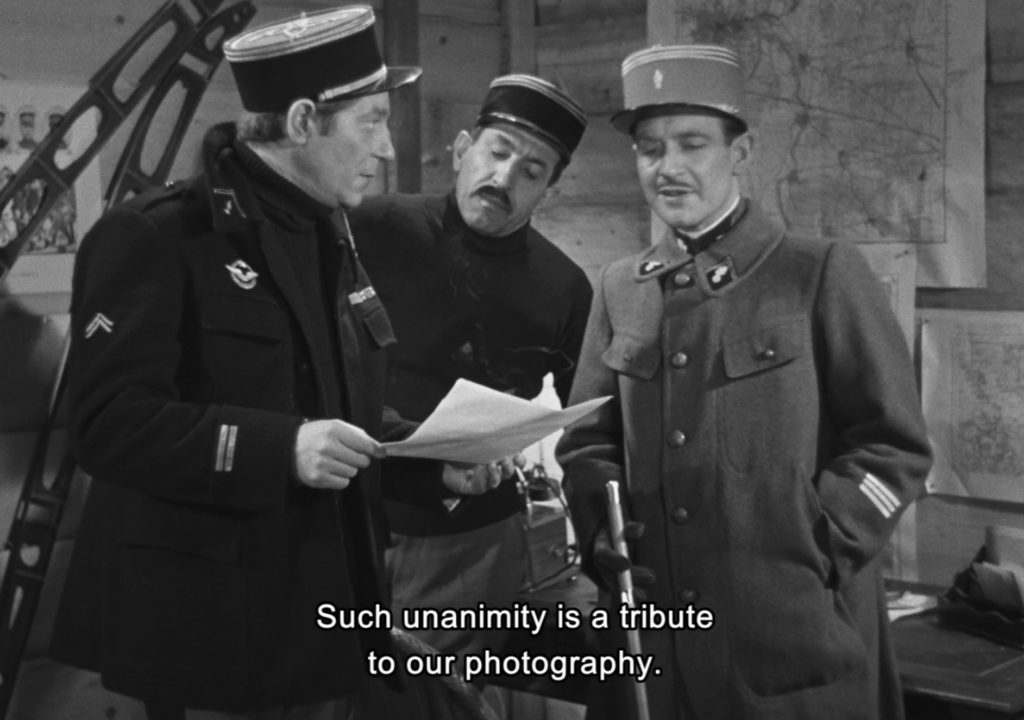
Director Jean Renoir—who fought in World War I himself—was the son of famed painter Auguste Renoir, and he approached a blank screen with the same artistic flair that his father approached a blank canvas. The plot involves two French soldiers during WWI who are kidnapped by the Germans and sent to a POW camp. After several almost successful escape attempts, they are sent to a fortress that is so well-constructed that any attempt at escape seems hopeless. A huge undercurrent in the film is the fact that the upper classes seem isolated to the actual horrors of the wars in which they send their peasants to die. Roger Ebert wrote, “It’s not a movie about a prison escape, nor is it jingoistic in its politics; it’s a meditation on the collapse of the old order of European civilization.”
The African Queen (1951)

Hollywood icon Humphrey Bogart won a Best Actor Oscar for his portrayal of Charlie Allnut, a grubby, alcoholic riverboat captain who is tasked with leading prim society matron Rose Sayer (Katharine Hepburn) down a dangerous African river toward a lake and use his own beloved little boat—named The African Queen—as a torpedo to sink a German warship during World War I. The African Queen has subsequently been criticized for dehumanizing portrayals of both Germans and African natives.
Paths of Glory (1957)

Kirk Douglas turns in the performance of a lifetime as Colonel Dax, a noble soldier who resists—but finally submits to—his commanders’ orders to lead his men into an offensive which the commanders are certain will kill off at least half of Dax’s men. This early masterpiece by auteur Stanley Kubrick takes its title from poet Thomas Gray’s ‘Elegy written in a country churchyard’: “The paths of glory lead but to the grave.” Roger Ebert wrote that the film brutally conveys “The permanence of trench warfare, the devastation of attack, the hypocrisy of the ruling class, the dread of the condemned men….There is no nostalgia in ‘Paths of Glory.’ Only nightmare.”
Jules and Jim (1962)
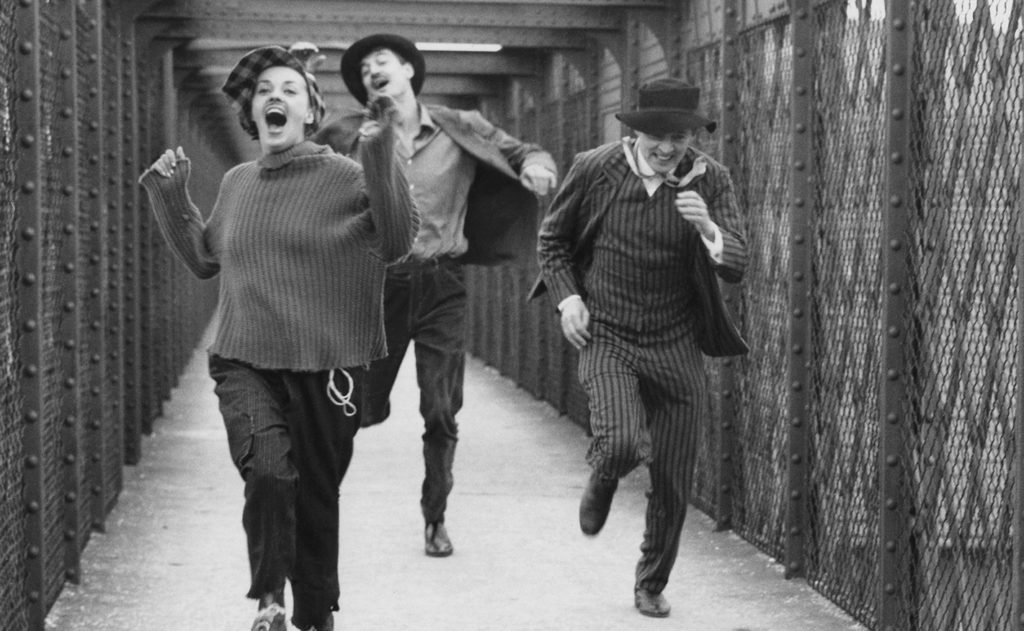
Based on a semi-autobiographical novel by Henri-Pierre Roche about his own experiences as a young man, this New Wave meisterwerk by Francois Truffaut centers around the decades-long struggle between two men to win the affections of a manipulative and unfaithful woman (Jeanne Moreau) who cruelly plays on their love for her. It starts around the time of World War I when the Austrian Jules (Oskar Werner) and the French hipster Jim (Henri Serre) are enlisted to fight on opposite sides of the conflict and worry that they may wind up killing one another. Roger Ebert wrote that the film “begins in lighthearted gaiety, which continues with romance and passion, and then resumes after the First World War as if the war, having broken the spirit of Europe, broke theirs, too.”
Lawrence of Arabia (1962)
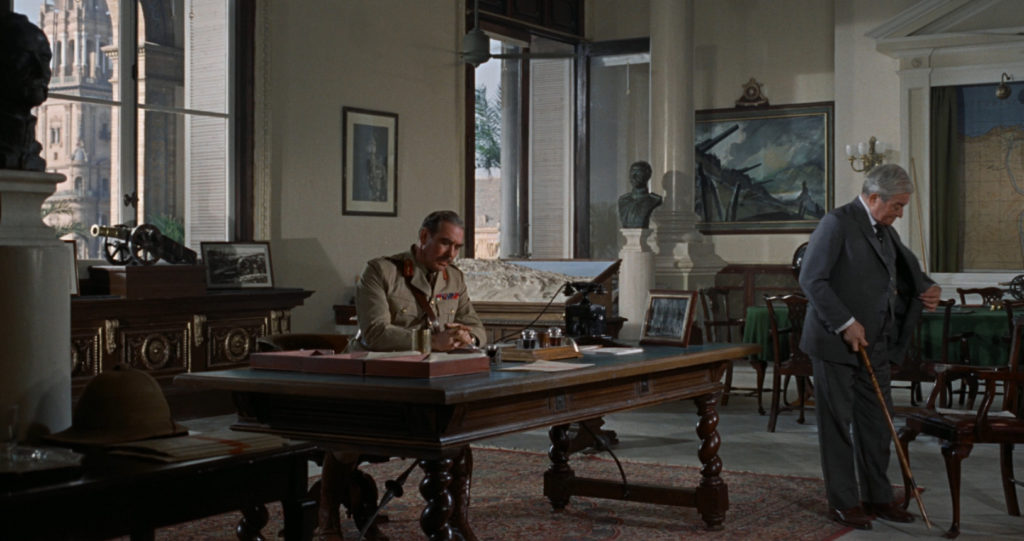
Nearly four hours long, this epic war film by David Lean tells the true story of T.E. Lawrence (Peter O’Toole in the role that made him a star), an English officer stationed in northern Africa during World War I who successfully united a patchwork coalition of warring Arab tribes to fend off the Turkish forces who represented the Ottoman Empire. It was banned in many Arabic countries because of what were perceived as unflattering depictions of Arabs; however, costar Omar Sharif, an Egyptian-born Hollywood star, was able to convince Egyptian President Gamel Abdel Nasser to watch it, after which Nasser gave his enthusiastic endorsement and allowed it to be screened throughout Egypt. A review in the BBC noted that besides Peter O’Toole, “That other star of the film – the desert – is so magnificently captured in all its endless immensity that you’ll find sand between your toes when you take your socks off.”
King and Country (1964)

Adapted from a successful stage play, King and Country tells the sage of Army Private Arthur James Hamp (Tom Courtenay), who is accused of deserting his post during World War I and is court-martialed and brought before a tribunal. In the course of the proceedings, his initially skeptical defense lawyer (Dirk Bogarde) learns the intimate details about what exactly might lead a man to abandon his post during the war—the endless soul-scarring indignities that can break the mind of the noblest soldier. Great War Films wrote, “He’s seen a friend blown to pieces in front of him. The guns, he just couldn’t take the guns anymore so he just started walking home. Mental health and how badly it was dealt with during the war is the real story here.”
The Blue Max (1966)

George Peppard stars as a lower-class German fighter pilot who struggles for respect in a profession usually reserved for upper-class aviators. He attempts to score himself a “Blue Max”—a war medal awarded to fighter pilots who make at least twenty kills. He is rebuffed at every turn by his commander (James Mason) and struggles with another pilot for the affections of Mason’s unfaithful wife (Ursula Andress). The Blue Max was praised for its hyper-realistic depictions of WWI aerial dogfights.
Von Richthofen and Brown (1971)
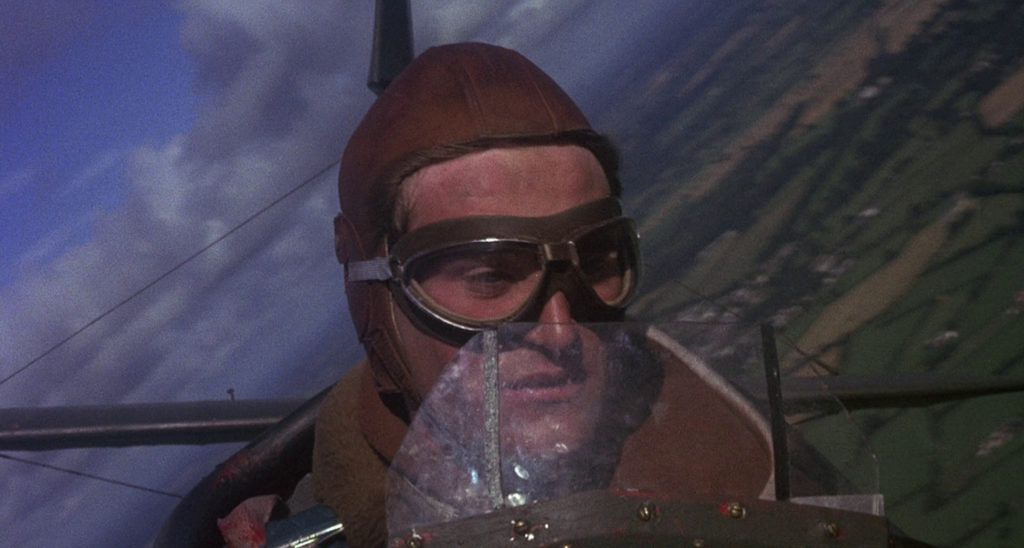
Manfred von Richthofen, better known as “The Red Baron,” was a legendary German fighter pilot during World War I who won an astounding 80 air battles before finally being shot down during his 81st battle by a Canadian pilot named Arthur Royal Brown. This rare non-exploitation film by the king of the B-movies Roger Corman was described by The New York Times as “an extraordinarily impressive movie by a filmmaker whose career has not always been marked by success, or even noble failure.”
Gallipoli (1981)
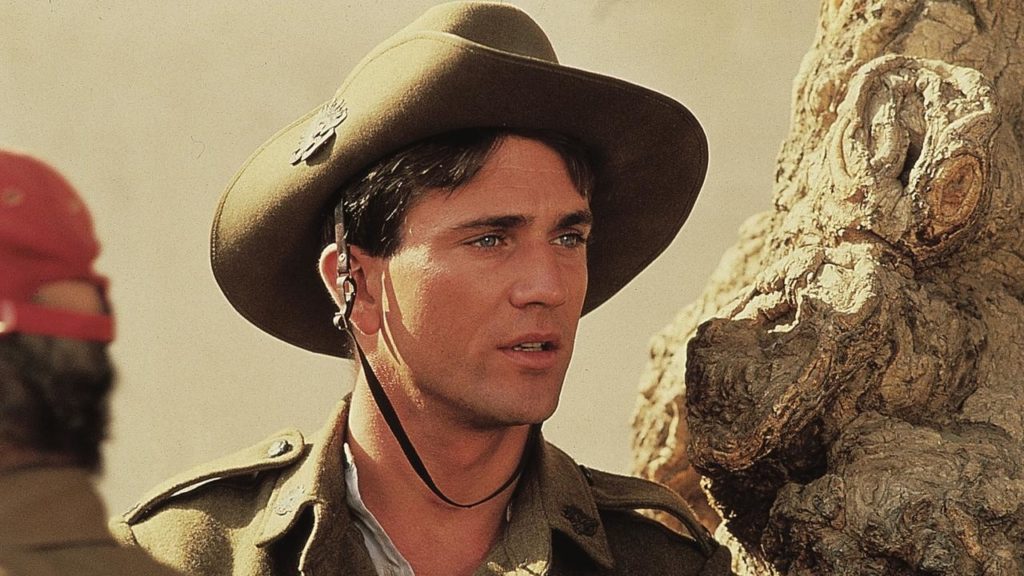
Mel Gibson stars as a young Australian sprinter who is enlisted in the army and sent to fight the Turks during the Gallipoli campaign of World War I. The first two-thirds of the film deal with male bonding between Gibson and another sprinter; the rest takes place in Turkey and deals directly with the horror of the “War to End All Wars.” The Movie Scene wrote, “So here is the thing about ‘Gallipoli’ the actual war element, the dramatization of what happened in 1915 when hundreds of soldiers from Australia and New Zealand were basically sent on a suicide mission only comes right at the end.” Which makes for an artful film, but not your typical Hollywood flick.
The Trench (1999)
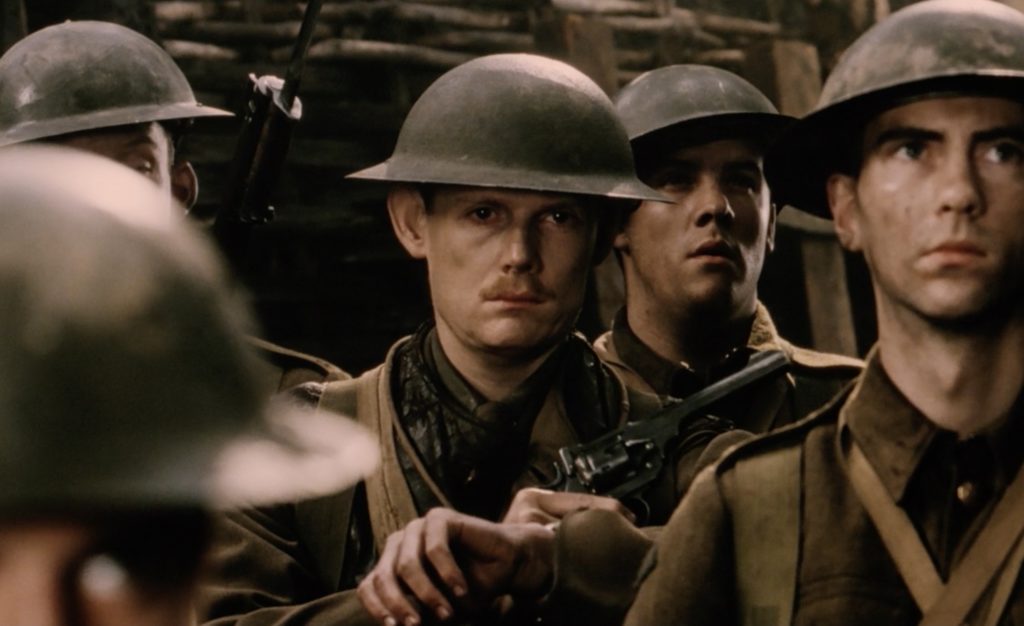
Based on the real-life Somme Offensive by the British Army in France during World War I, The Trench focuses on a small group of soldiers who must man the front lines during the final days before the Offensive as the army assembles its massive forces and artillery behind them. History on Film panned The Trench: “The director’s desire to create a snapshot of the period right before the Somme Offensive is laudable but the film is boring…just boring.”
A Very Long Engagement (2004)

A young orphaned woman named Mathilde (Audrey Tatou) searches throughout the film for her fiancé, who was sent to almost certain death on the front lines of World War I after being falsely accused of wounding himself in an effort to avoid military duty. Something deep in her soul tells her that he is not dead. Roger Ebert wrote, “This story is told in a film so visually delightful that only the horrors of war keep it from floating up on clouds of joy. Jeunet depicts this reality as well as I have ever seen it shown on the screen, beginning with his opening shot of a severed arm hanging, Christ-like, from a shattered cross.”
Passchendaele (2008)

This Canadian production was filmed in Alberta and is based on the Canadian offensive on the village of Passchendaele in Belgium during the Third Battle of Ypres in 1917. A production crew recreated the rainy, muddy fields of the Belgian trenches on the plains of Alberta. The story weaves together the tales of a veteran, his nurse girlfriend, and a naively patriotic boy. History on Film wrote, “Veterans have described the Passchendaele Offensive as a frozen, muddy hell, and the scenes at the front are chillingly accurate. Narrow wooden paths had been constructed by laying a series of duckboards over the mud but men will literally drown in the mud if they step off those paths in the wrong place.”
Beneath Hill 60 (2010)

Beneath Hill 60 is based on the true 1916 story of the Battle of Messines Ridge, Australian miners who were hired during the endless standstill on the Western Front to tunnel thirty yards beneath German lines and plant explosives designed to shatter the German forces aboveground, which ended up killing an estimated 10,000 German soldiers. The ultimate explosion was allegedly so loud that it could be heard 130 miles away in London. Cinema Autopsy wrote, “The low light and muted sounds of explosions far up on the surface make the tunnel settings incredibly claustrophobic for the audience (the cinematography and sound design are magnificent), recalling the cramped submarine sets of Das Boot.”
War Horse (2011)
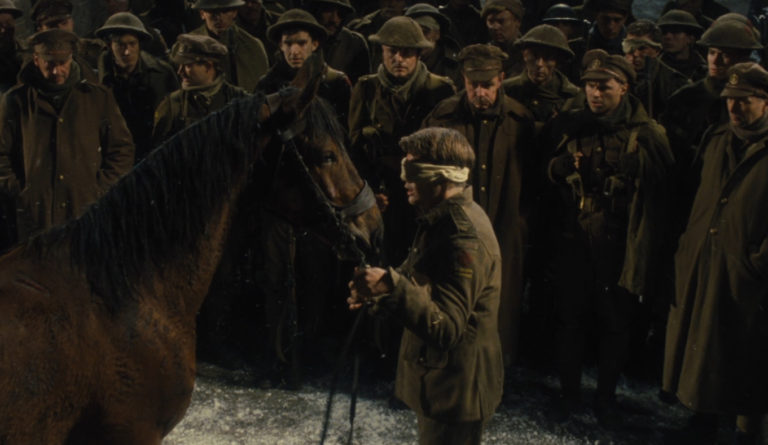
In this epic war film from DreamWorks Pictures and director Steven Spielberg, special effects are used only sparingly to tell the tale of a young impoverished man named Albert who enlists in the English military during World War I after his beloved horse Joey is snatched from him and sold into the English cavalry. Roger Ebert wrote, “Its message is a universal one, about the horror of war in which men and animals suffer and die, but for the animals there is no reason: They have cast their lot with men who have betrayed them.” War Horse is based on a 1982 novel by Michael Morpurgo that became a successful stage play in both New York and London.
They Shall Not Grow Old (2018)

New Zealand’s military role in World War I is a matter of national pride, and native New Zealander Peter Jackson painstakingly put together this documentary from 600 hours of British archival footage, restoring and colorizing it. Although some purists criticized the film for altering history by its thorough digitization, a reviewer for BFI disagreed: “In fact, if you want to come close to the ‘reality of the Western Front, the numerous stereo photographs taken in the trenches will still take you there with a shocking immediacy (which for me gives Jackson’s use of 3D extra justification that I’m keen to see).” In this way, Jackson’s film is a critical educational tool for understanding the past.
Journey’s End (2018)

Based on a 1928 play by R.C. Sherriff—who was motivated to write it after witnessing his shellshocked friends as they came back from World War I—Journey’s End is set in a dugout in the French town of Aisne in 1918, where a group of British soldiers struggles to maintain their sanity while their commanding officer, Captain Stanhope (Sam Claflin)—in a role previously played by Sir Laurence Olivier—is clearly losing his mind. The Hollywood News wrote, “Journey’s End is engulfing, immersing, claustrophobic cinema, a character-driven piece driven by powerful performances by an amazing cast. A clear stand-out is the lead, Sam Claflin’s failing, mentally drained alcoholic, a career-best from the British actor who shines in every scene.”
1917 (2019)
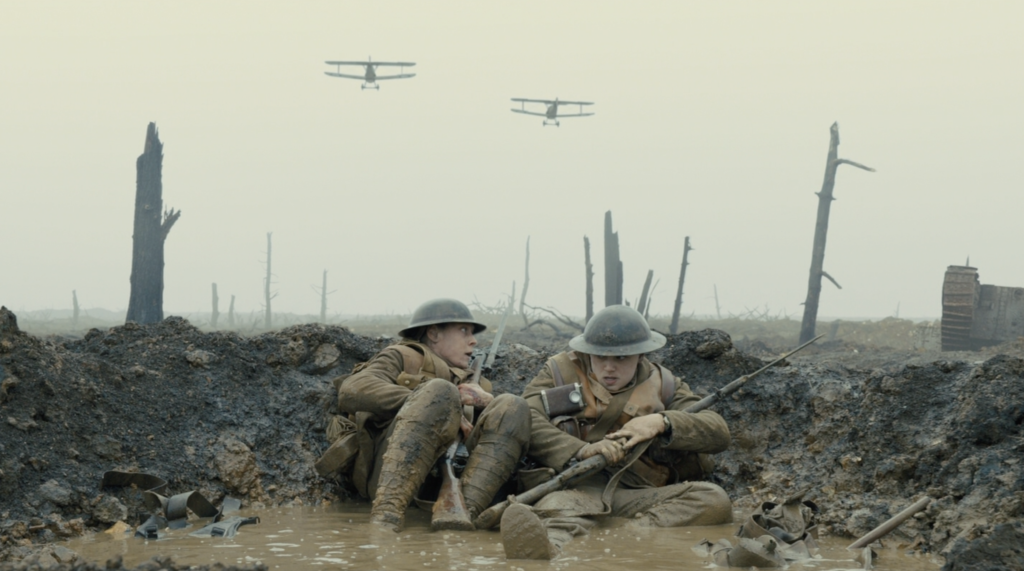
Sam Mendes is famous for directing two James Bond movies—Skyfall (2012) and Spectre (2015)—as well as dramas such as American Beauty (1999) and Revolutionary Road (2008). His WWI film 1917, however, was a passion project and an ode to his grandfather who fought in the First World War. Of all the films in this historical genre, 1917 is certainly the most cinematically enchanting, as it employs a one-shot film technique that tells the tale in realtime of two soldiers on a mission to stop a large battalion of British soldiers from walking into a German trap. The film was inspired by the Operation Alberich, but the characters and plot are entirely fictional. 1917 is a valuable contribution, as it manages to bring to life the setting of trench warfare on the big screen while introducing mainstream audiences to the horror of WWI with a compelling Hollywood plot.
More World War I Movies

- The Little American (1917) is a silent film about and romantic war drama about an American woman in love with a German and French military man.
- The Big Parade (1925) is another silent war movie about a rich man from the United States who signs up to be a solider and is shipped off to France to fight.
- Wings (1927) is an early WWI film and was the first movie to win the the Academy Award for Best Picture.
- Wooden Crosses (1932) is one of the earliest films to express the trauma of the First World War.
- The Spy in Black (1939) is a spy movie about a German submarine officer who falls in love with a British secret agent. It takes place toward the end of the war in March 1917. This movie was released in the United States with the title U-Boat 29.
- Sergeant York (1941) an American World War I hero captures a German base all by himself in this epic black and white film.
- The Life and Death of Colonel Blimp (1943) was very loosely inspired by the Colonel Blimp comic strip by David Low. The film is historically relevant because it used technicolor and is considered by many as one of the best British films ever.
- East of Eden (1955) is loosely based on the book of the same name by John Steinbeck and captures what life was like during the first war back on American soil. James Dean plays the leading role in this 50s motion picture.
- The Bridge on the River Kwai (1957) is a feature film focused exclusively on WWII, but there are references to the first great war.
- The Time Machine (1960) is an H.G. Wells narrative that involves a time traveler who visits both World War I and World War II.
- Oh! What a Lovely War (1969) is a British war movie with an ensemble cast. The film used popular songs from the time to help describe WWI; critical reviews are mixed, but the general consensus is that it was an elaborate and fantastical cinematic experience.
- A Month in the Country (1987) two emotionally wounded World War I veterans head to Britain’s countryside to work through their trauma and rediscover friendship.
- War Requiem (1989) puts Benjamin Britten’s “War Requiem” score to a series of war images.
- Life and Nothing But (1989) is a French film about post-World War I France with stunning cinematography and textured philosophical insights.
- Joyeux Noel (2005) a true story about Christmas Eve and soldiers during WWI.
- Fly Boys (2006) James Franco stars as a French pilot. This movie is famous for its cinematic depiction of aerial dogfights between fighter planes.
- Inglourious Basterds (2009) is Quentin Tarantino’s alternative history film about World War II; however, one scene makes reference to the exotic dancer/double agent for Germany in World War I, Mata Hari.
- Battle Ground (2013) British soldiers are about to charge the German line.
- Testament of Youth (2014) is a British drama told from the perspective of a war nurse.
